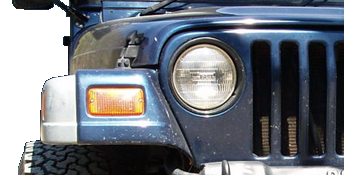this is correct. lift is created by air passing across the wing surface. the airspeed of the aircraft would be 0. it would be like flying at 50 knots with a 50 knot tailwind. the only direction you would go is down. this is why you always take off and land INTO the wind.
you could think of it like this- if an aircraft carrier was used to do the same thing, (say at 30 knots), the plane moves forward relative to the carrier at 30 knots. as soon as it leaves the end of the ship, it's airspeed is still 0. the plane wheels will be turning. heck, they'll still be turning when it hits the ocean...
though i didn't watch whatever happened on myth busters, it is possible that if they had a very light plane with a prop on the nose, it might create enough wind to create some lift. that being said, my first answer is what i will stick with. good night.
edit, just saw the video. the plane was very light and was in fact moving forward when it took off. watch how the traffic cones are passing by at a good clip.
100% wrong.



